Glen Sannox: A view from the inside
- Published
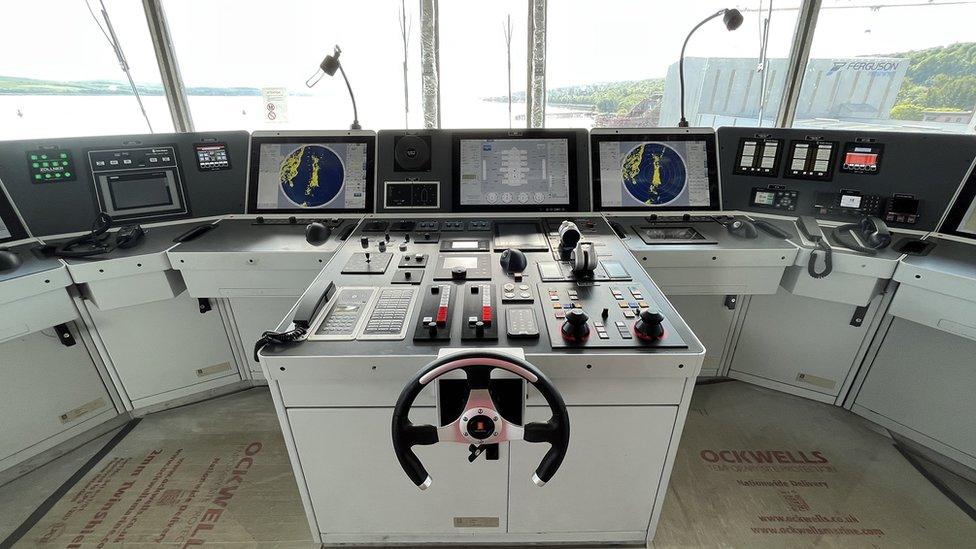
The wheelhouse of Glen Sannox is operational and the control systems are live
The two CalMac ferries being built at Ferguson Marine shipyard in Port Glasgow are six years late and massively over budget - but the yard's new boss believes the first ship, Glen Sannox, is finally coming to life.
Scotland's ferries fiasco is a long and complex story but David Tydeman believes the challenges have been overcome. Despite the controversy, he says it is a great ship.

The windows in the passenger observation lounge were famously painted on when Nicola Sturgeon launched Glen Sannox in November 2017 but beneath the protective film there is glass in them now,
The ceiling panels are not yet installed, but once the fitting out gets to this stage, the tidying up can be completed relatively quickly.
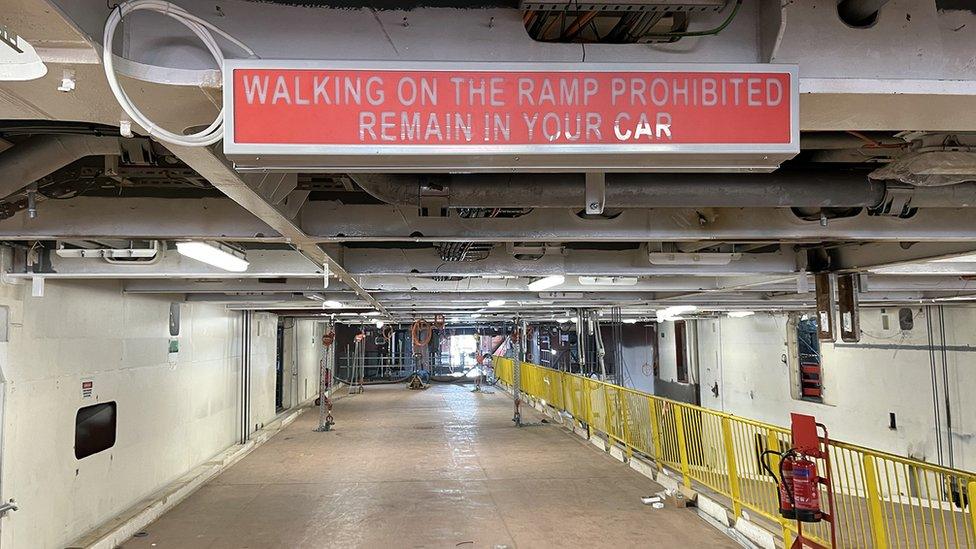
This is the car deck on Glen Sannox which is capable of carrying 127 cars or 16 HGVs.
The cargo capacity (known as deadweight) in the specification was about 25% higher than for previous CalMac vessels of a similar size - yet the ship was also required to have a shallow draught (the amount of hull below the waterline) so it could navigate shallow harbours.
These challenging numbers were later relaxed slightly but the 102m long Glen Sannox should still be able carry 878 tonnes with a draught of 3.45m.
For comparison, the four CalMac ships currently being built in Turkey are 94.8m long, carrying 750 tonnes at 4m draught.
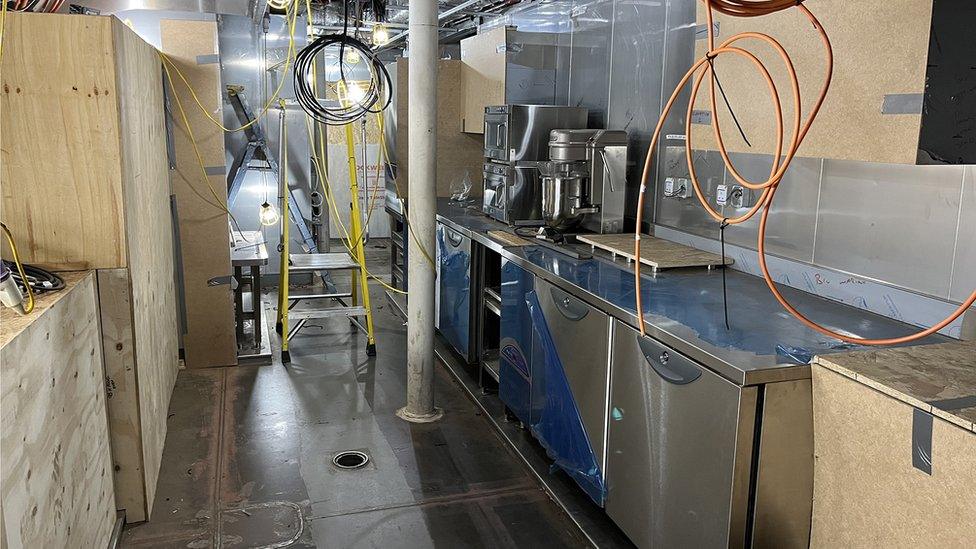
The ship's galley is fully fitted out although some of the equipment is still boxed up to protect it.
Glen Sannox can carry up to 1,000 passengers, and has a servery and eating areas to keep them catered for.
Like most CalMac major vessels, it has high quality on-board living accommodation for the 32 officers and crew.
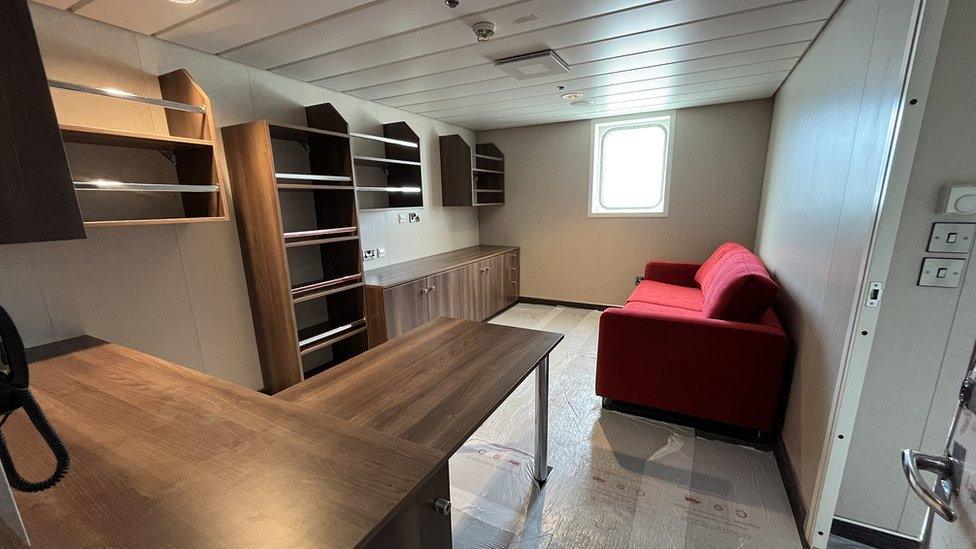
The master's office and adjoining en-suite cabin is located high up on deck 7, just a short distance behind the wheelhouse, with the chief engineer's cabin just opposite, in case they are needed urgently on the bridge. The remaining six officers' cabins are on the same level.
A deck below there are more en-suite cabins for 24 crew or cadets along with a crew gymnasium, sauna and laundry.
Deck 6 also has U-shaped passenger lounges and open air seating.

Deep in the belly of the ship a huge insulated tank will store the liquefied natural gas (LNG) fuel, keeping its temperature between minus 160C and minus 170C. It will take three tanker loads to fill it.
The ship can switch seamlessly between LNG and normal marine gas oil which is similar to diesel.
LNG is a cleaner fuel, producing smaller amounts of pollutants known as NOx and SOx.
On greenhouse gases, the benefits have been questioned. When running on LNG, CO2 emissions are said to be reduced by up to 25%.
But that figure does not include the carbon cost of getting the fuel to the ship. CalMac currently plans to import the LNG from Qatar and transport it by road tanker from a terminal in Kent.
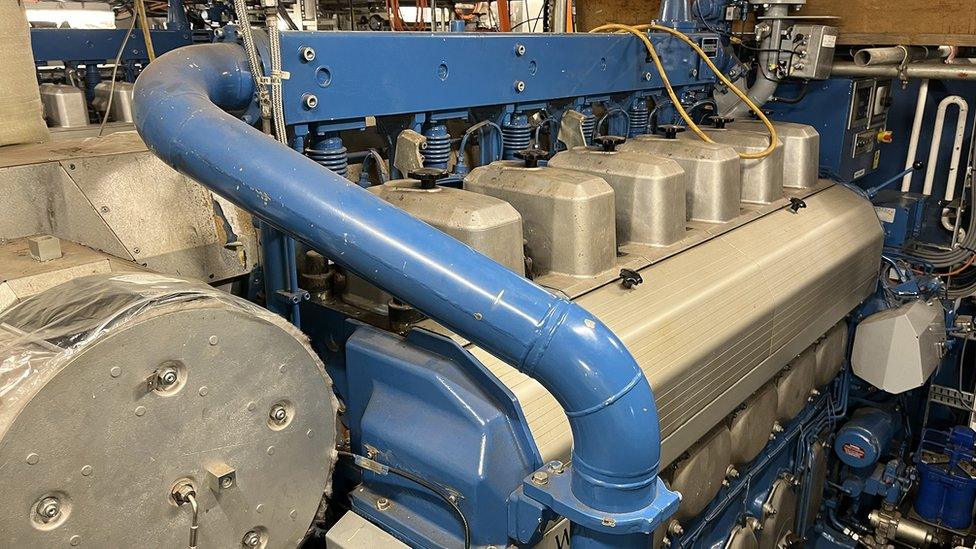
Glen Sannox has two Wartsila dual-fuel main engines and two auxiliary engines, running generators. All have six cylinders.
The choice of engine size was a design stumbling block in the first months of the build. When it signed the contract FMEL proposed eight cylinder units but CalMac preferred smaller, more fuel efficient ones, so an extra clause was added allowing them to be downsized if possible.
FMEL's design team found that with these smaller engines they were unable to deliver on other required specifications - deadweight and draught - which, after weeks of debate, were eventually relaxed slightly.
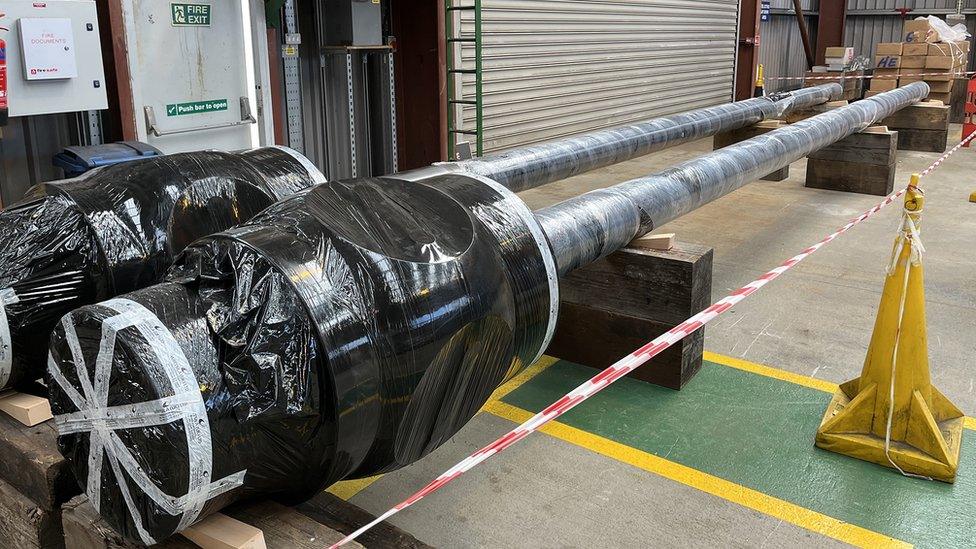
These propeller shafts were originally fitted to Glen Sannox, but the ship had spent so much time at the quayside after its slipway launch in 2017, it was decided to switch them for ones ordered for 802.
They have now been refurbished by the manufacturer and will be fitted to the second vessel.
Another design challenge of these ferries was that they were meant to be identical, but were required to have different operating speeds on different routes. It is more usual to optimise the hull shape and propellers for a single service speed.
In his claim for extra costs Jim McColl claimed that CMAL squandered weeks of valuable design time in 2016 by asking FMEL's designers to investigate alternative propeller designs, before finally sticking with the original choice.
CMAL denies that, saying it was simply trying to help the shipyard find a solution to speed requirements it had signed up for in the contract.

The switch room and power management systems are described by the electrical engineers as the "beating heart of the ship".
With its choice of LNG or MGO fuel, main and auxiliary engines, David Tydeman says there are 16 different permutations for powering Glen Sannox.
As well as the engines there are bow and stern thrusters to help the ship manoeuvre and hold its position in rough weather.
The ship has also been designed with a high degree of "redundancy" - meaning if something fails, there are other options available.
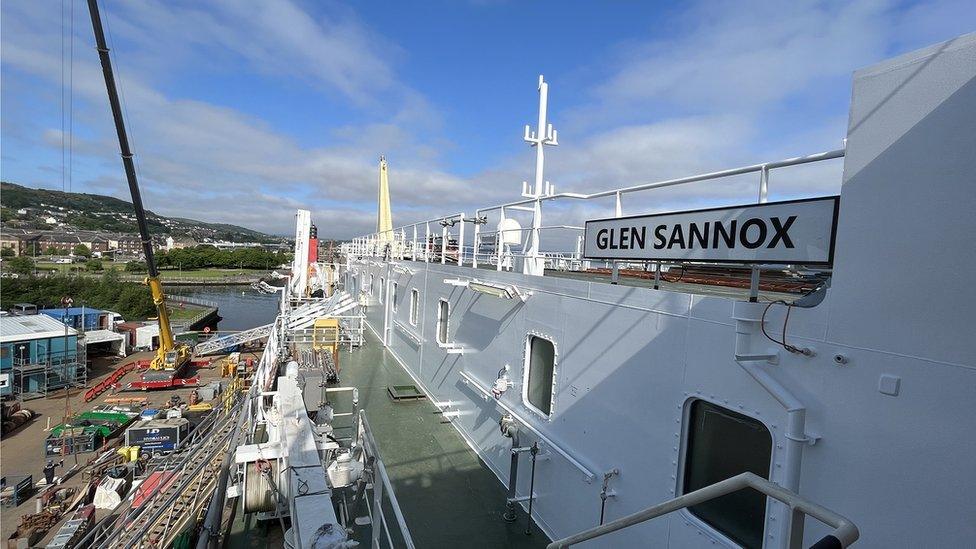
The commissioning of the LNG systems in the coming months will be a nervous time, but if all goes well Glen Sannox will be delivered by the end of the year.
After sea trials and training, it should be in service with CalMac on its busy Arran route early in 2024.
For islanders facing another summer of breakdowns and disrupted services that's a day that cannot come soon enough.
All images are copyrighted
Related topics
- Published6 June 2023
